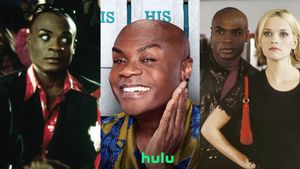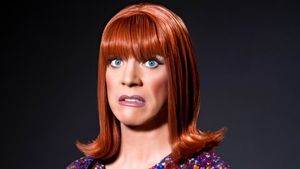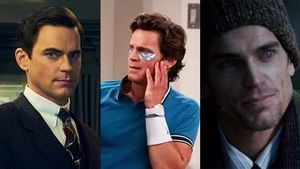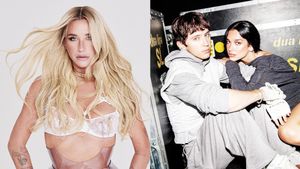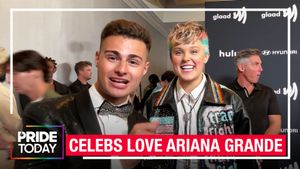"I'm going out in drag tonight," Philip tells me about an hour before we're scheduled to meet up. "Wanna come over and watch me put my make-up on?"
"Do you have to?" I respond, trying to talk him out of it.
"Yes," he says. "I have to. See you soon."
Philip and I met a few years ago and became fast friends. On our first Amtrak trip from northern New Jersey, where we both grew up, to D.C., where we'd attend college, we bonded over Lady Gaga's newest album. We agreed that Ricky Martin is vastly underappreciated by gays under the age of 25.
And he told me all about drag queens.
Listening to Philip dish about his favorite performers was fun, but I never had much to say: Growing up in conservative suburbia, I didn't know many gay people at all, let alone gay men who dressed up as women for a living.
Shortly after meeting Philip, though, I became immersed: At the first drag show I attended at a D.C. gay club, I sobbed through each number in awe. It was me -- not him -- who insisted we make the club's weekly show a regular part of our social calendar.
When I'm at a drag show, don't remind me that Donna Summer is long gone, or insist that Beyonce wouldn't be caught dead on the third floor of a hole-in-the-wall performing for 20 people. When I'm at a drag show, I am mesmerized, doling out dollar bills and intent on believing the performer's illusion.
Watching a live show -- and, eventually, becoming an aficionado of Logo's RuPaul's Drag Race -- has made me feel, for the first time, part of a tight-knit queer community with its own dialect and body language. I don't want to be a drag queen. But four years after learning what a drag queen is, I love drag.
So Philip was surprised when I told him: "I won't go out in public with you if you're wearing lipstick or a wig."
"Just a subtle eye?" he pleads, giggling slyly.
This conversation happened with increasing frequency. Usually, Philip acquiesced. But after a few gin and tonics at the bar, he started talking: "I wanted to come out in drag tonight but Justin wouldn't let me," he tells strangers sitting next to us.
For a moment, I felt guilty. But the next time Philip brings up wearing drag, I'd repeat my refrain: Wear what you want -- but if you dress up as a woman, I'll make other plans.
 Intuitively, I knew I was uncomfortable when Philip chose to go by "Pepper." I couldn't bear the thought of bearing the brunt of judgey side-eye of other gay men.
Intuitively, I knew I was uncomfortable when Philip chose to go by "Pepper." I couldn't bear the thought of bearing the brunt of judgey side-eye of other gay men.
That's because to me, being at a gay club felt like being part of a clique. My validation as a gay man was determined by how others in that exclusive group perceived me -- and I was desperate not to misstep.
I didn't think about my insecurities, though, because a few years after coming out, I assumed I had the gay thing down. I protested in front of the Supreme Court during the Proposition 8 oral arguments. I've seized on every opportunity to write about LGBT issues. I spent my college years advocating for gay history courses and grumbling about gay men who couch their insecurities in heteronormative fraternity culture.
I didn't bother with introspection because I thought when it came to self-acceptance, I was already where I needed to be. But Philip taught me that there are limits to liberal thinking -- especially my own.
For years, I was insistent on proving to everyone around me that I was gay, but also normal. I was proud of my sexual orientation and loved being around other gay people, but only if I could set the parameters for our behavior.
So as college graduation neared, I knew that I still had a lesson to learn.
A few days before Commencement Day, I was sitting in a chair in Philip's apartment. He was standing in front of the mirror, pursing his lips inquisitively. Mariah and Mary J. are on the iPod as he slowly turns into she, starting first with a clean shave, then some foundation and then, eventually, bright red lipstick.
Philip batted his curly stick-on eyelashes in the mirror and it was time to go out. We called an Uber and hopped in the elevator.
"I'm gonna shock some people tonight!" he smirked, expecting to see some friends in the elevator who knew Philip but might not recognize Pepper.
He was right. Our arrival at the gay bar -- supposedly a safe space for genderqueer people -- didn't stop some people from noticing Philip, gawking with wide eyes, then whispering to each other as he and I walked by.
Positive or negative, Philip loves the attention. He always does: That's why he talks loud, strikes up friendly conversation with strangers, and, well, dresses up as a woman whenever he's in the mood.
To him, the night out went well. In the cab on the way home, Philip was glowing.
"Did you hear that he complimented my makeup?"
"Yes, Philip," I forced myself to say. "You looked great and I'm proud of you."
For a second, I thought he would respond by saying he was proud of me, too -- you know, for being out in public with a drag queen.
What he actually said: "See? I told you! It was fun!"
Finally, I did see. I saw that Philip's choice to dress up in drag is the same as my choice to wear skinny jeans or expensive shoes. I saw that my fear about how people would look at Philip was actually about how people might look at me.
I admitted for the first time since coming out that I had still kept one foot planted firmly in closet with the door ajar, ready to lock myself back inside the moment the all-too-familiar shame set in.
Chances are, you won't see me wearing heels on the dance floor anytime soon. But I'm thankful, at least, that befriending a drag queen has forced me to take a deeper, longer look at myself in the mirror.
 JUSTIN PELIGRI is a journalist based in Washington, D.C. Find him on Twitter @JustinPeligri
JUSTIN PELIGRI is a journalist based in Washington, D.C. Find him on Twitter @JustinPeligri
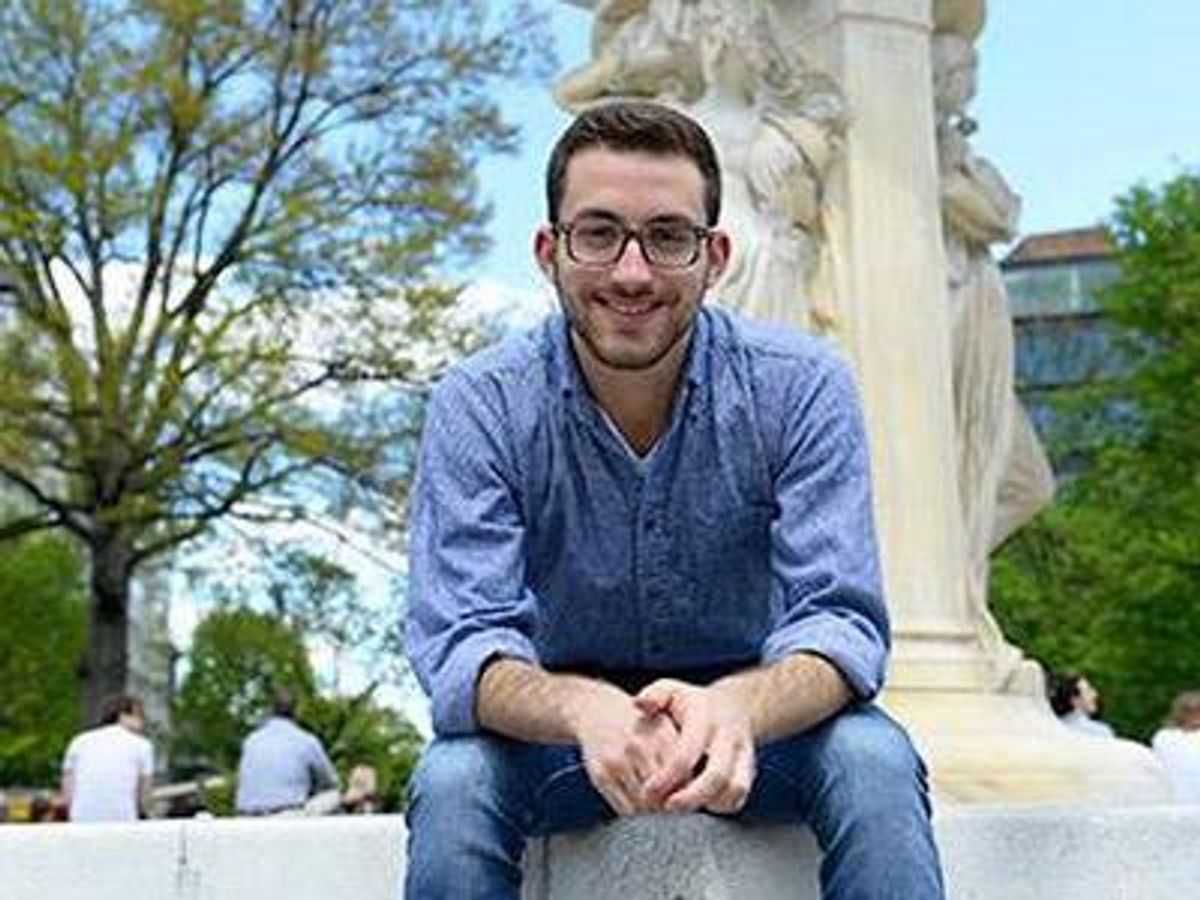








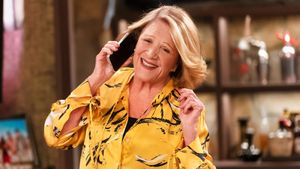







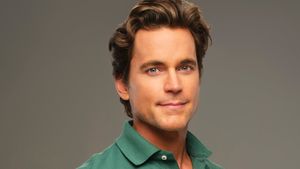

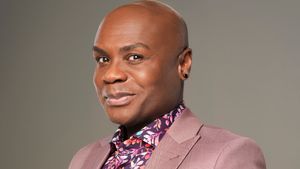
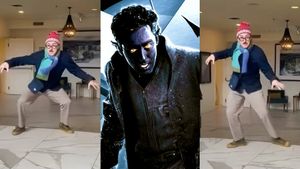



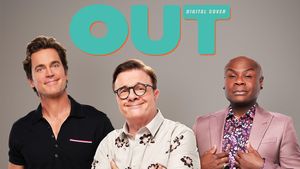







 Intuitively, I knew I was uncomfortable when Philip chose to go by "Pepper." I couldn't bear the thought of bearing the brunt of judgey side-eye of other gay men.
Intuitively, I knew I was uncomfortable when Philip chose to go by "Pepper." I couldn't bear the thought of bearing the brunt of judgey side-eye of other gay men. JUSTIN PELIGRI is a journalist based in Washington, D.C. Find him on Twitter
JUSTIN PELIGRI is a journalist based in Washington, D.C. Find him on Twitter 
